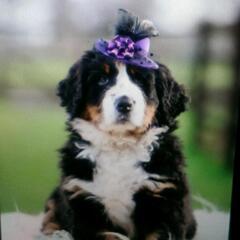This was a Dutch tv show during the late '70's and begin '80's. Medemblik in Noord-Holland is the charming subject of this episode. In the first minute you can see an old fashioned bakeryshop and a bit of the bakery in the back. Those heartcookies are speculaas. Apologies for the quality, these images don't show up in the regular episode available on YouTube.
It has become a bakery museum (sorry, no English text) and is being remodeled as we speak.
Better quality and more recent footage:
He first shows a bread shape. It has something to do with the reformation that the Dutch use these shapes and not make baguette.
The second object is for speculaas. Back in the day there was a lot more variation than the usual windmills and such of today. Every figure is symbolic for something. He thinks this wooden plank is about 200 years old.
Last but not least our shapes for sugarwork and candies.
Here's a more in depth Sinterklaasspecial.
First you get to see some products in the store.
The presenter has an assignment to find a vrijer, which translates to lover and refers to the old tradition of how the speculaas men and women (speculaaspoppen) were used. People would give this to their crushes. If it was reciprocated, they would accept the speculaas. If not, the would refuse or break the head off. This was typical for the West-Friesian region in Noord-Holland.
After shaping speculaas in the back, they move on to sugarwork. The son, who specialises in sugarwork, explains a bit about sugarwork belonging to one of the oldest guilds. As sugar was so expensive, people wanted to show it off. The art pieces were made with dragant (sugar with gelatine) and tragant (sugar with something related to arabic gum). The train won a price in 1996, he is most proud of this piece.
Now they're gonna make sugarbeasts. He soaked the wooden shapes for at least an hour. As with speculaas, the shapes are symbolic. Doves were popular for weddings. The rooster symbolises purity. He refers to a painting of Jan Steen, where a girl holds a little white rooster to symbolize her innocence. The third is hard to understand, I think it's a peacock that stands for vanity.
Sugarbeasts are getting less common, at least I don't see them often anymore. They're made of sugar and water. I remember them being coloured, orange, yellow, brown (cocoa) and pink. The baker (scratchy noises from the bottom of the pan) and sight (cloudy texture). He also tells about selling a lot of these and how this surprises him as sugar is getting such a bad rep, especially for kids. Nonsens, he says.
They also speak about borstplaat, which is heavy cream and sugar. It literally means chest plate and was advised when you have a cold. Now that's a medicine I can get behind!
It can still be found, but one has to be careful to get the real deal. In supermarket they will sell a borstplaat that's actually a fondant type. Do not fall for this trap, it's vile! If any of you make it to The Netherlands, it will probably be Amsterdam. If you're there in November and first week of December, get yourself to Pompadour for some proper borstplaat. I mention the season, because borstplaat is only made in the period up to Sinterklaas. You won't find it outside that time window and Pompadour can be worth it for other products as well, year round (imho).






